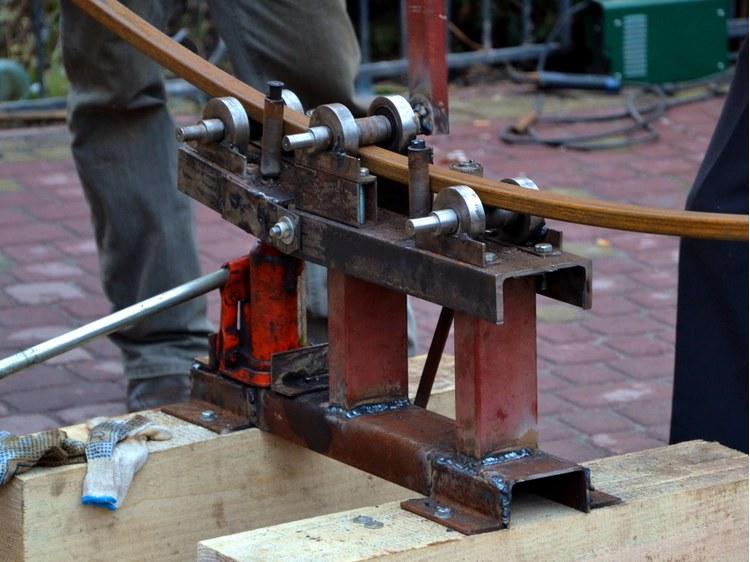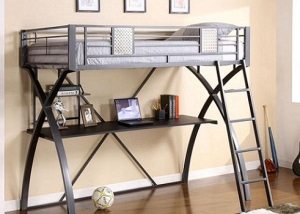Rolling pipes is a necessary part of the process of partially changing the shape of pipes, due to which hollow metal products are given the required configuration or expand the diameter. Pipes can be rolled in different directions, depending on the intended result. The process of changing the diameter is carried out on machines in the workshop or at home - using the simplest devices. Using the rolling method, the formation of products from a metal sheet is also available.
Content
Features of the rolling process
Rolling is an affordable process of manufacturing all kinds of metal parts or pipe segments of the required format. Each device for expanding tubes has its own specifics, but this process is also used for other purposes - the processing of a metal rod or thin sheet metal.
The name of the process comes from a primitive device - special rollers are quite simple in design and operation, but they give an extensive radius of curvature of the workpieces. Industrial production involves the use of forging rollers (rolls) through which a piece of metal passes.
Proper use of the tool guarantees a high-quality and uniform deformation along a given circle or at a certain angle. For example, you can get a workpiece of the correct cylindrical shape or curl for forged gates using rollers for a profile pipe with your own hands.
The rollers are selected according to the thickness of the metal product, often a large radius roller is required. Not only does steel become ductile when machined with the above tools. In a similar way, plastic, polymeric materials and some bar and sheet and metal are deformed:
- aluminum;
- black metal;
- soft alloys;
- galvanizing.
Attention! Today, pipe bending and rolling are a common service, but this process can be mastered independently if there is an easy-to-use device. Such skills are applicable in various fields and in industrial production, in the manufacture of welded structures - stairs, gates, furniture.
The most common methods of forming metal products after rolling a profile pipe:
- stretching;
- bending;
- winding;
- flaring holes.
The process involves fixing the pipe in the lumen using expansion, and the diameter of the pipe should be smaller than the hole. For reliable connection, rolling equipment is used. But this concept implies different processes:
- Rolling as a way to change the width of the inlet, clearance or diameter of the pipe during heat treatment and welding.
- Rolling pipe bends.
- Rolling as a method of reducing diameter.
- Rolling a piece of seamless pipeline.
- Flaring a workpiece to change the diameter of the pipe (increase).
Attention! Rolling pipes without experience is not an easy task, and with excessive force the metal will lose its ductility and may crack, other signs of destruction will appear.
Milling tools
Rolling of pipes and sheet billets is not only different, but also performed on other equipment. Most often, bending or forging rollers are used - sheet metal is rolled between the rollers for uniform processing and obtaining a section in the form of a cylinder. Manually undertaking such a process is impractical - it requires a lot of time and experience, even if it's just rollers for a pipe bender. It is easier to deform products by machine tools, so it makes sense to go to the workshop if you do not have the skills and equipment, and alloy steel is difficult to operate.
Rolling sheet metal between the rollers gives a bend of a certain shape. Rollers and machine tools have a limit on the thickness and radius of the conductive metal. An increase in radius gives a decrease in the bending radius when forming a thin metal sheet on bending rollers.
Special machines are also used for flaring pipes and rolled steel. The universal tool is easy to use, allows you to mold products of the required shape. Break-in of sheet blanks is carried out through the circumference of the upper roller, but it can also do the reverse movement. After processing sheet steel with rollers, the length of the product slightly increases, and the cross-section becomes slightly smaller due to heat and mechanical processing.
The most popular rolling tool:
- machine of a series P (products with a diameter up to 40 mm);
- RT equipment (products with a diameter of up to 5.50-11.5 mm);
- T-series equipment (products with a diameter in the range of 6-11mm);
- rollers ST (products with a diameter of 6-11mm);
- CP series equipment (parts of thick tube sheets);
- 5P series tool (thin-walled products).
Often, to change the bend of the pipe, a household pipe bender controlled by a handle is enough. In this case, the radial shape of the product is molded by means of a control roller during rolling.
Important! So that the pipe does not flatten in the place of its bend, sand must be poured into it before deformation in order to preserve the natural shape of the walls to the maximum.
The three-roll bender is also suitable for rolling metal. Its purpose is to work with stainless steel products of rectangular and square shapes. This tool bends these blanks well into an arc. The pipe bender is working on the product on both sides.
The flaring of tubes with a hand tool is made on aluminum and copper, since these are the softest metals. The limiting factor in industrial equipment is the power and wall thickness for which this or that device is designed.
Advice! Do not use thin-walled pipes for water in a private house. This will result in simple expansion and joining, but will not last long - due to metal corrosion.
Specific terminology of different rolling methods
The concept of “pipe rolling” is a little false in terms of linguistic norms. Under this term lies 2 opposing operations, and parts of the workpiece deformation are performed without rollers.
Summarizing the terminology, it is worth mentioning that rolling is:
- change in the shape of the pipe (turning into a round, square, oval shape);
- bending at an angle or radius;
- forming a round or flat workpiece into a tube-shaped product;
- the extension of the end or the increase of one end of the pipe to prepare for docking with a part or fragment of the pipeline;
- crimping the end of the pipe end to create a tight joint (reducing the diameter);
- metal cutting giving the pipe end a different shape and diameter.
Rolling. Beginning of the expansion process after the pipe is inserted into the molding hole. This eliminates the gap between the edges of the hole and the pipe bender.Next, you need to apply force to start the deformation process with a denser joint.
Flaring steel pipes - the most common way to deform the pipeline and other products. This is a method of expanding the diameter of one of the fragments of the pipeline - for high-quality articulation of segments. After such processing, the communication sections are joined by the telescopic method - the end of one pipe fits as tightly as possible into the subsequent fragment.
Used frequently copper pipe expansion at installation of water supply systems and central airs. Such an operation (as for all other metal pipes) is performed by such equipment:
- clamp (expander);
- ratchet (adjusts the force of pressing);
- cone or funnel (changes the diameter to a larger value).
Attention! Cone-shaped equipment is used for ductile and ductile metals.
Rolling- reverse flaring process, reducing the inlet of the pipeline. Often, simpler devices, such as a vice and a hammer, are used to narrow the diameter. Also, the edges can be given a different shape - according to the type of profiled pipes. This method also eliminates defects at the edges of the tubes that arose during cutting.
Features of rolling at home
In everyday life, rolling of products made of copper, aluminum, galvanizing and stainless steel is performed on universal bending rollers that can replace machines, pipe benders and special equipment. The quality of work depends on the wall thickness and the compliance of the equipment with the task.
Its high-quality rolling tool is reliable enough, does not require repair, it has been used for many years. To work in home mini-shops, compact machines of the RT, P, T, CP, 5P and ST groups are used (mentioned above). Rolling a profile pipe is more difficult to do than transforming a round workpiece.
Advice! Many products are easier to bend at home after heating with a blowtorch - for greater ductility.
When rolling copper or aluminum pipes with your own hands, it is important not to rush and monitor the deformation process. With excessive pressure, it is possible to expand the hole more than required, and back to "close up" it is very problematic. Breaks are most likely on copper and steel pipes, so all steps must be done using technology.










